In the field of healthcare and wellness, having the right equipment is crucial. Among the essential pieces of equipment is the treatment table. Treatment tables come in various configurations, and one of the most versatile options is the 2-section treatment table. This article provides a comprehensive overview of the 2-section treatment table, highlighting its benefits, features, and considerations when choosing one.
Understanding the 2-Section Treatment Table
The 2-section treatment table is specialized medical furniture designed to provide a comfortable and functional platform for patients during various medical procedures. It consists of two distinct sections: the main table and an adjustable headrest section. The main table serves as the primary surface where patients lie down, while the adjustable headrest allows for personalized positioning and support for the head and neck.
Benefits of a 2-Section Treatment Table
- Versatility: The 2-section treatment table offers versatility in accommodating a wide range of medical procedures. Its adjustable headrest and flexible positioning options make it suitable for various treatments, examinations, and therapies.
- Comfort: With its cushioned surface and ergonomic design, the 2-section treatment table ensures optimal patient comfort during procedures. The adjustable headrest allows for proper neck support, enhancing the overall comfort and relaxation of the patient.
- Patient Accessibility: The two-section configuration allows healthcare professionals easy access to the patient's body, facilitating examinations, treatments, and therapy sessions. This accessibility is particularly valuable in fields such as physical therapy, chiropractic care, and massage therapy.
- Space Efficiency: Compared to bulkier multi-section treatment tables, the 2-section design takes up less space in medical facilities, making it suitable for clinics or practices with limited space.
- Cost-Effective: The 2-section treatment table is generally more affordable compared to larger, more specialized treatment tables. This cost-effectiveness makes it an attractive option for healthcare providers who need a versatile yet budget-friendly solution.
Key Features to Look for 2-Section Treatment Table
When selecting a 2-section treatment table, several key features should be considered:
- Adjustable Headrest: Ensure that the headrest can be easily adjusted to accommodate different patient needs and preferences.
- Sturdy Construction: Look for a treatment table made of high-quality materials to ensure durability and longevity. The table should be able to support different body types and weights.
- Padding and Upholstery: Opt for a table with ample padding and comfortable upholstery to enhance patient comfort during procedures.
- Height Adjustability: Consider a treatment table with adjustable height settings to accommodate healthcare professionals of varying heights and facilitate ease of use.
- Mobility: If mobility is important for your practice, choose a treatment table with wheels or casters for easy transportation within the facility.
Versatility and Adaptability
The 2-section treatment table's versatility and adaptability make it suitable for various medical fields and procedures. It can be used in chiropractic clinics, physical therapy centers, massage therapy practices, and more. Its flexibility allows healthcare p
Exploring the Design and Structure of a 2-Section Treatment Table
The design and structure of a 2-section treatment table play a crucial role in providing comfort, accessibility, and versatility for patients and healthcare professionals alike. This article delves into the key aspects of the design and structure of a 2-section treatment table, shedding light on its components and their functionalities.
The Main Table
The main table is the primary section of the 2-section treatment table, where patients lie down during medical procedures. It typically consists of a cushioned surface, supported by a sturdy frame. The main table is designed to provide optimal comfort and support to patients while accommodating their body positions during treatments or examinations.
The cushioning material used on the main table is often made of high-density foam, which offers both comfort and durability. The foam is covered with a smooth and easy-to-clean upholstery material, ensuring hygiene and cleanliness in clinical settings. The main table is usually wide enough to accommodate patients of different sizes, providing ample space for them to lie down comfortably.
The Adjustable Headrest
One distinguishing feature of the 2-section treatment table is the adjustable headrest section. This component allows healthcare professionals to customize the position and support for the patient's head and neck during treatments. The adjustable headrest enhances patient comfort and ensures proper alignment during procedures.
The headrest is usually connected to the main table through a mechanism that allows for various adjustments. This mechanism can include a range of angles and heights, enabling healthcare professionals to position the headrest according to the specific needs of each patient. The headrest may have its own cushioning and upholstery to provide added comfort and support to the patient's head and neck.
Adjustable Height Settings
Another important aspect of the design of a 2-section treatment table is its adjustable height settings. These settings allow healthcare professionals to customize the table's height to their own comfort and the requirements of the medical procedure. Adjustable height settings ensure that healthcare providers can work ergonomically, minimizing strain on their bodies.
The height adjustment mechanism is usually located beneath the main table and can be operated using hydraulic or electric controls. By simply pressing a button or using a foot pedal, the table's height can be raised or lowered smoothly and effortlessly. This feature enables healthcare professionals of varying heights to work comfortably and maintain proper posture during treatments.
Additional Features
While the main components of the 2-section treatment table are the main table and the adjustable headrest, there are often additional features that enhance its functionality and usability. These features may include:
- Storage Options: Some 2-section treatment tables come equipped with built-in storage drawers or shelves. This allows healthcare professionals to conveniently store and access essential tools, equipment, and supplies during procedures.
- Mobility: To facilitate ease of movement within the clinical setting, certain 2-section treatment tables are designed with wheels or casters. This mobility feature enables healthcare professionals to transport the table easily from one room to another or to reposition it within the same room.
- Accessories: Various accessories can be added to the 2-section treatment table to enhance its versatility. These may include armrests, leg supports, or additional cushions that provide extra comfort and support for patients during specific procedures.
Applications and Uses in Medical and Therapeutic Settings
The versatile 2-section treatment table finds numerous applications and uses in various medical and therapeutic settings. Its design and features make it a valuable asset for healthcare professionals across different disciplines. In this article, we explore the applications and uses of the 2-section treatment table, highlighting its benefits in providing effective care and treatment to patients.
Chiropractic Care
Chiropractors often rely on the 2-section treatment table to provide spinal adjustments, manipulations, and other chiropractic treatments. The adjustable headrest section allows chiropractors to position the patient's head and neck comfortably while performing adjustments. The main table provides a stable and supportive surface for patients during treatments, ensuring proper alignment and allowing chiropractors to apply the necessary techniques.
Physical Therapy
In physical therapy settings, the 2-section treatment table serves as a versatile platform for various therapeutic exercises and modalities. Physical therapists can position the patient's body correctly, whether it's for stretching, strengthening, or range of motion exercises. The adjustable headrest allows for comfortable positioning during therapies targeting the neck and upper body. The table's sturdy construction supports the patient's weight and provides stability during exercises.
Massage Therapy
Massage therapists also benefit from the versatility of the 2-section treatment table. The cushioned main table and adjustable headrest section allow massage therapists to position the client optimally, promoting relaxation and providing easy access to different parts of the body. The table's comfort and stability contribute to a soothing massage experience for clients, while the adjustable headrest ensures proper alignment of the neck and head during treatments.
Acupuncture and Traditional Chinese Medicine
In the practice of acupuncture and Traditional Chinese Medicine (TCM), the 2-section treatment table offers a suitable platform for patients to receive treatments such as acupuncture, cupping, and herbal therapy. The adjustable headrest allows acupuncturists to position patients comfortably for needle insertions, while the main table provides a stable surface for additional TCM treatments. The table's adaptability facilitates easy access to specific points on the body, ensuring effective therapy sessions.
Dermatology and Aesthetics
Dermatologists and aesthetic professionals utilize the 2-section treatment table for various procedures, including skin examinations, laser treatments, and cosmetic procedures. The adjustable headrest allows for proper positioning of the patient's face, facilitating accurate assessments and treatments. The main table provides a comfortable surface for patients during procedures, ensuring they remain still and relaxed for optimal outcomes.
Rehabilitation and Sports Medicine
In rehabilitation and sports medicine settings, the 2-section treatment table plays a vital role in the assessment and treatment of injuries. Physical therapists and sports medicine professionals can position patients on the table for evaluations, applying manual techniques, or providing therapeutic exercises. The table's adjustability allows for customization based on the specific needs of each patient, enabling targeted rehabilitation and injury management.
Other Medical Specialties
Beyond the aforementioned fields, the 2-section treatment table finds applications in various other medical specialties. It serves as a versatile platform for examinations, minor procedures, and treatments in fields such as podiatry, gynecology, orthopedics, and more. Its adaptability, comfort, and accessibility make it a preferred choice for healthcare professionals seeking a reliable treatment surface.
Benefits for Healthcare Providers and Patients
The versatile 2-section treatment table offers a wide range of benefits for both healthcare providers and patients. Its design and features are carefully crafted to enhance comfort, accessibility, and efficiency in medical and therapeutic settings. In this article, we explore the advantages that the 2-section treatment table brings to healthcare providers and patients alike.
Benefits for Healthcare Providers
- Versatility and Adaptability: The 2-section treatment table's versatility allows healthcare providers to perform various procedures and treatments on a single platform. Its adaptability caters to different medical disciplines, enabling healthcare providers to address a diverse range of patient needs.
- Improved Ergonomics: The adjustable height settings of the treatment table promote proper ergonomics for healthcare providers during procedures. They can position the table at an optimal height that aligns with their own comfort and reduces strain on their bodies, promoting better posture and minimizing the risk of musculoskeletal injuries.
- Ease of Access: The design of the 2-section treatment table allows healthcare providers easy access to patients' bodies during treatments or examinations. This accessibility facilitates efficient workflow, reduces the need for awkward positions or excessive reaching, and enhances the precision and effectiveness of procedures.
- Patient Comfort and Safety: The cushioned surface and adjustable headrest section of the treatment table contribute to patient comfort and safety. The ergonomic design ensures that patients can lie down in a relaxed position, promoting a positive experience and facilitating successful outcomes.
- Time Efficiency: The 2-section treatment table streamlines the workflow for healthcare providers. Its design and features enable quick and easy adjustments, allowing for efficient transitions between different treatment modalities or patient positions. This time efficiency enhances productivity and patient throughput in busy clinical environments.
Benefits for Patients
- Enhanced Comfort: The cushioned surface and ergonomic design of the 2-section treatment table prioritize patient comfort. The materials used provide a supportive and comfortable platform for patients to lie down during treatments, examinations, or therapies, ensuring a positive and relaxing experience.
- Improved Accessibility: The adjustable headrest section of the treatment table enhances accessibility for patients. It allows for personalized positioning and support, ensuring that patients can maintain a comfortable and natural alignment of their head and neck throughout procedures.
- Stability and Safety: The sturdy construction of the treatment table ensures stability and safety for patients. They can confidently lie down without concerns about the table shifting or wobbling, allowing healthcare providers to focus on delivering the necessary care without interruptions.
- Customization and Personalization: The 2-section treatment table's adjustable features enable customization and personalization of the patient's experience. Healthcare providers can easily adjust the table's height, headrest angle, and other settings to accommodate individual patient needs, optimizing treatment outcomes and ensuring patient satisfaction.
- Facilitates Therapeutic Relationships: The comfortable and patient-centered design of the treatment table helps foster positive therapeutic relationships. Patients feel cared for and supported, creating an environment of trust and collaboration between healthcare providers and patients.
Comparing 2-Section Treatment Tables with Other Treatment Table Options
When it comes to selecting a treatment table for medical and therapeutic settings, there are various options available. One popular choice is the 2-section treatment table, known for its versatility and adaptability. In this article, we compare the 2-section treatment table with other treatment table options, highlighting their differences and unique features.
2-Section Treatment Tables
- Design and Structure: The 2-section treatment table consists of two distinct sections: a main table and an adjustable headrest. This design provides flexibility in positioning patients and accommodating different medical procedures. The adjustable headrest allows for personalized support and comfort for the head and neck.
- Versatility: 2-section treatment tables are known for their versatility. They can be used in various medical disciplines, such as chiropractic care, physical therapy, massage therapy, and more. The adjustability of the headrest and the main table enables healthcare providers to perform a wide range of treatments and therapies.
- Patient Comfort: With cushioned surfaces and ergonomic design, 2-section treatment tables prioritize patient comfort. The adjustable headrest and customizable settings allow patients to find a comfortable position during treatments, enhancing their overall experience.
Other Treatment Table Options
While the 2-section treatment table offers its own set of advantages, it's important to consider other treatment table options as well:
- 3-Section Treatment Tables: These tables have an additional section that allows for more precise positioning of patients. The extra section is often used for treatments or examinations that require specific body angles or support.
- Electric Treatment Tables: Electric treatment tables feature motorized controls for adjusting the table's height and other settings. This allows for easy and precise adjustments, reducing manual effort and enhancing efficiency during procedures.
- Hydraulic Treatment Tables: Hydraulic treatment tables use hydraulic systems to adjust the table's height and settings. They offer reliable and smooth adjustments, making them a cost-effective alternative to electric tables.
- Specialized Treatment Tables: Certain medical fields require specialized treatment tables tailored to their unique needs. For example, gynecology tables have adjustable leg supports and stirrups, while podiatry tables have specialized footrests and positioning features.
Choosing the Right Option
When choosing between different treatment table options, consider the specific requirements of your practice and the treatments you offer. Factors to consider include the types of procedures performed, patient comfort needs, budget constraints, and space availability. It's essential to evaluate the features and benefits of each option and match them to your practice's requirements.
The 2-section treatment table stands out for its versatility, adaptability, and patient comfort. However, other treatment table options like 3-section tables, electric or hydraulic tables, and specialized tables also offer unique features that may suit specific medical fields or treatment modalities. By carefully assessing your practice's needs and considering the advantages of each option, you can make an informed decision when selecting the right treatment table for your medical or therapeutic setting.

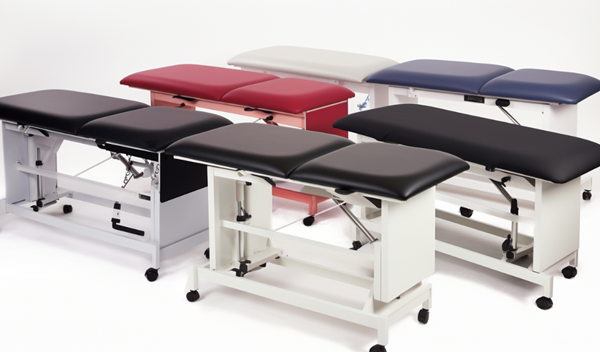
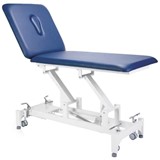

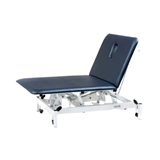

-160x160-state_article-rel-cat.png)












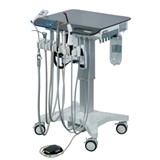



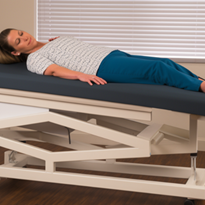
-205x205.png)
